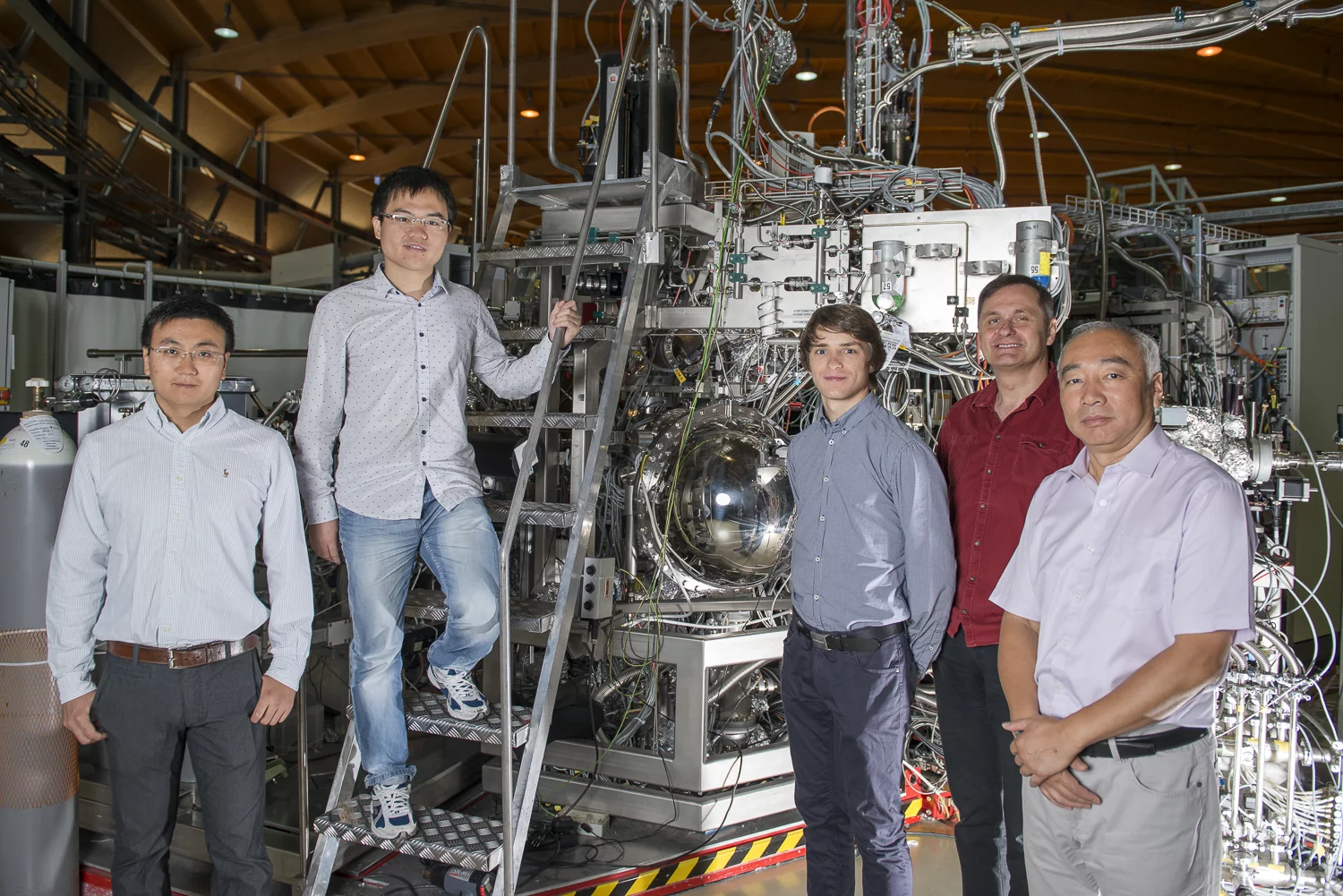In a series of experiments at the Swiss Light Source SLS, physicists from the Paul Scherrer Institute PSI in an international collaboration with colleagues from China, from ETH Zurich and EPFL Lausanne have discovered a particle, the existence of which was predicted eighty-six years ago. It is a member of the particle family that also includes the electron, the carrier of electrical currents. The particle now discovered is massless and can exist only within a special class of materials known as Weyl semi-metals.
All elementary particles can be assigned to one of two categories: fermions or bosons. All elementary particles that make up matter and antimatter are fermions. Bosons are basically responsible for conveying the forces between the fermions. All fermions have a spin, a property that allows them to behave like small magnetic compass needles. Some bosons can have a spin, but some other, like the famous Higgs particle, have no spin. The fermions include the electron, for instance, which is found in the atoms of all materials and the movement of which produces electrical current for countless technical applications. The bosons include the photon – the particle that light is made of.
Decades of searching for the exotic fermion
The new discovery now confirms an old prediction: a particle that Hermann Weyl, a German mathematician and then a professor at ETH Zurich, predicted back in 1929. It exhibits all the properties of an electron, except for one: it doesn’t have any mass. Known as the Weyl fermion, this particle has now been found simultaneously by several research groups, including a team from PSI. However, the discovery was not made in a kilometre-long particle accelerator, as is usually the case, but rather inside tiny crystals.
In other words, the Weyl fermion was not discovered as a free elementary particle, like the famous Higgs particle, for instance, which was detected in the large hadron collider (LHC) at CERN around fifty years after its theoretical prediction. Instead, after an eighty-six-year hunt, the Weyl fermion has now appeared as a so-called quasi particle, a term physicists use to refer to particles that are only found inside materials. Quasiparticles are a handy concept to describe the complex, collective movements of the many particles in these materials in a simple way. In the PSI study, the Weyl fermions were detected in a small, highly pure crystal made of the semimetal tantalum arsenide (TaAs), which had been grown in the lab. This material has been at the heart of the search for the Weyl fermions only since last year, based on theoretical calculations.
Like the electron, but faster and straighter
Due to the exotic properties of the TaAs crystal, the charge carriers in it can be considered as particles without mass- the Weyl fermions
, explains the researcher Xu Nan, a joint postdoc at PSI and EPFL. In certain materials like TaAs, Weyl fermions move much more rapidly than normal electrons. Moreover, in the presence of a magnetic field, the Weyl fermions move nearly without resistance along the direction of the magnetic field. The Weyl fermions move then along straight lines without anything that can force them off their course. This property, which is interesting for potential applications, if it can be used in a controlled way in a real device, is also a consequence of the crystal structure of a Weyl semimetal like TaAs, an intricate quantum mechanical phenomenon
, says Ming Shi.
Discovered thanks to x-ray technology
To detect the Weyl fermion, the researchers enlisted the aid of a globally renowned research facility: the Swiss Light Source (SLS) at PSI. This was my first experiment at PSI and at the SLS and I am very happy to have helped in finding the Weyl fermions
, said Baiqing Lv, an exchange PhD student at PSI. He and his colleagues shone the strongly focused x-ray light from the SLS onto the TaAs crystal to study the electron movement in the crystal. The x-ray light had sufficient energy to hurl electrons out of the crystal’s interior. The scientists then analysed these electrons, which are referred to as photoelectrons. They measured both the energy of every photoelectron and the angle at which they left the crystal, which enabled them to calculate the energy, speed and direction of movement the electrons had had previously within the material. This analysis ultimately led to the discovery of the Weyl fermions – those cousins of the electron which move through the crystal without the burden of mass.
Text: Paul Scherrer Institute/Leonid Leiva
Additional information
Spectroscopy of Novel Materials GroupContact
Prof. Dr Ming Shi, Senior scientistSpectroscopy of Novel Materials Group
Laboratory for Synchrotron Radiation – Condensed Matter
Paul Scherrer Institute
Telephone: +41 56 310 2393
E-Mail: ming.shi@psi.ch
Original Publication
Observation of Weyl nodes in TaAsB. Q. Lyu, N. Xu, H. M. Weng, J. Z. Ma, P. Richard, X. C. Huang, L. X. Zhao, G. F. Chen, C. E. Matt, F. Bisti, V. N. Strocov, J. Mesot, Z. Fang, X. Dai, T. Qian, M. Shi & H. Ding
Nature Physics 11, 724–727(2015)
DOI: 10.1038/nphys3426

